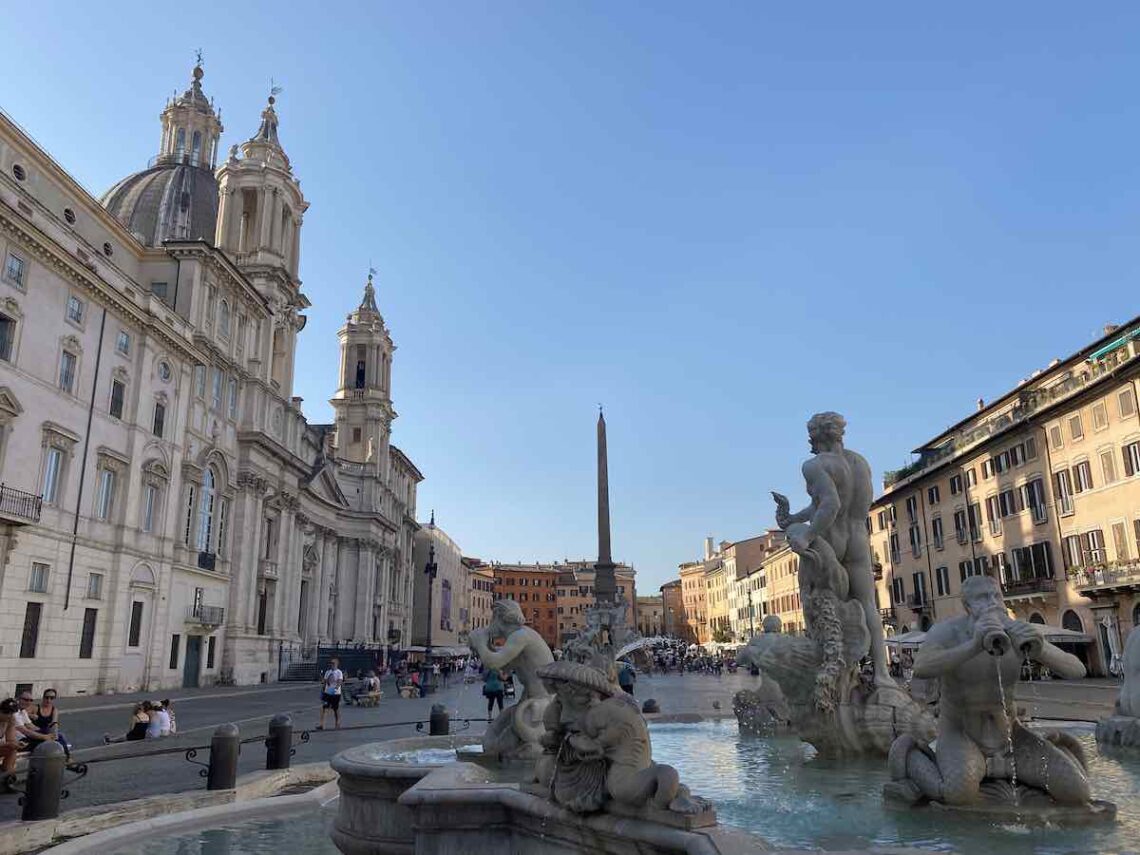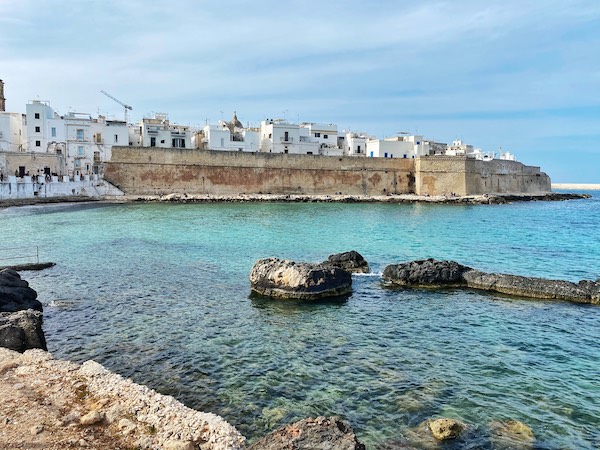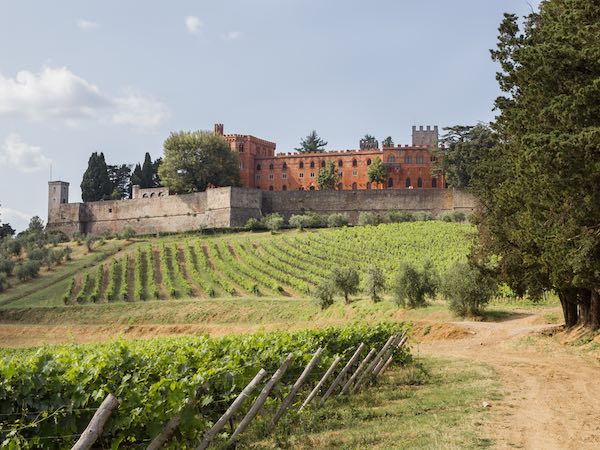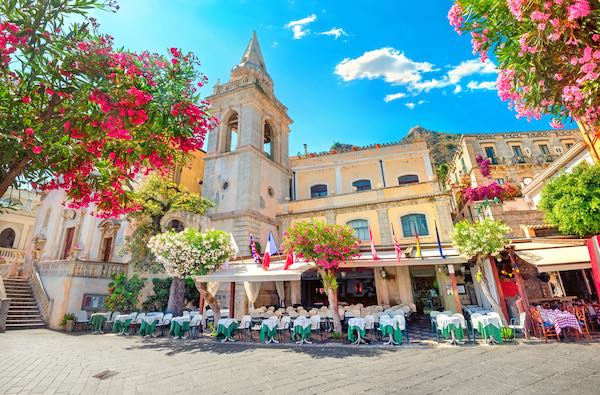Realistic, actionable, expert tips to escape the crowds in Italy without having to renounce seeing the most famous destination that inspired your trip!
Italy is an exceptionally popular travel destination; so much so that in the last few years it has become almost impossible to have a conversation about planning a trip to Italy without words such as ‘crowds’, ‘overrun’, ‘unsustainable’ or the annoying yet sadly apt ‘like Disneyworld on a busy day’ getting into it.
Indeed, tourism in parts of Italy is now out of control and while a certain number of visitors is a blessing for the local economy and a boon for visitors, who can count on many services, many localities now have reached a tipping point.
When the people are too many, everything deteriorates, and this includes the experience of the visitors themselves, who inevitably feel disappointed.
So, how do you go about it?
If you look online for tips to escape crowds in Italy, the advice seems to be ‘do not go to this popular destination, go to this alternative one instead’ and sure, that is one way of looking at it.
But let’s be honest: it’s not really a solution, is it? It is basically telling you to give up on what you wanted to see and go elsewhere, an elsewhere that often does not compare at all with the original thing.
There is no Rome unless you go to Rome. No Venice unless you go to Venice.
So today, I am want to try and help you find a balance between escaping the crowds in Italy yet still see what you want to see.
This requires some realistic planning and expectations and some soul searching, but it doesn’t have to be difficult: I am here to help!
I trust that that spending even just a bit of time on this will result in a travel experience that will be so much better, you won’t even believe it!
| One word of wisdom: no matter what you do, some exposure to mass tourism is inevitable in Italy if you want to see famous destinations. So, when reading these tips, look at them as ways to mitigate the worst exposure to crowds rather than a way to avoid them entirely. Also, avoiding crowds in Italy will inevitably come with some compromises over budget/ hours of visit / season of your trip. I try keep all of these to a minimum, but realistic expectations are key. |
Don’t ‘do’ Italy – Give yourself time
The most common and most damaging planning mistake I see from visitors to Italy is thinking the best way to escape the crowds in any given place is to stay as little as possible.
This sadly is the worst possible approach, on many accounts.
The main problem with staying in Italy too short a time for the amount of places you want to cover is that you will simply not have enough time to see anything but the most popular sites; and those are the places where the crowds are.
Look at it this way: if you have two days in Rome, one in Amalfi Coast, one in Florence, one in Cinque Terre and one in Venice, which is one of the most common itineraries and speed I see from visitors, do you think you have a chance of escaping crowds? Of course not.
Because in each place you’ll want to see the most famous sites, and you should! You should absolutely include top attractions in your itinerary. It is not realistic to just skip them, you’d miss several of the main reasons to visit the place.
However, so does everybody else!
If you only plan sufficient time to hit the landmarks, you will find yourself in crowds during the visit, and also in crowds as you go from one to the next.
The other problem with this approach as that it makes you concentrate on individual landmarks, instead of on what makes Italy special: the fact that towns developed over centuries and are themselves museums, not just a collection of monuments.
A short stay that sees you hopping form one landmark to the other will make you ‘fly over’ the wonders that are in between the landmarks and make Italy unique.
If you stay a little longer, you’ll avoid both issues. (Yes, I know you are short on time, but keep reading!)
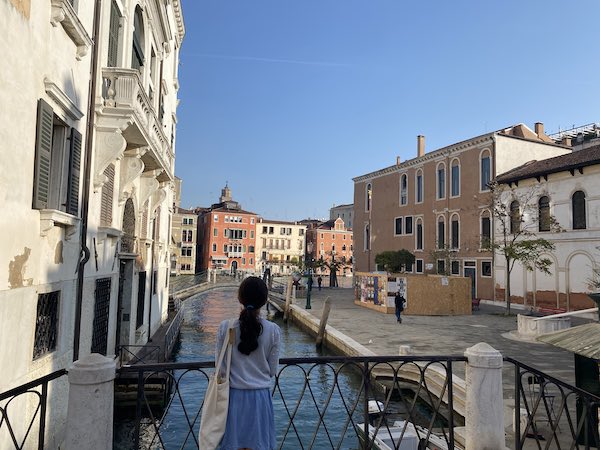
I know we are all short on time and staying longer in fewer places means taking time off somewhere else.
But please do consider carefully: what is the point in seeing something badly? Take a photo of a landmark you’ll then need to photoshop people out of? Say that you’ve been?
As much as possible I recommend to try and focus on the planning of a pleasurable and meaningful experience for you, an experience that allows you to feel the beauty, make it your own, and keep it with you as a memory that goes beyond the photo snap and overwhelming crows.
Pass by Florence duomo several times, see how the light hits at different hours of the day. Make the Colosseum the backdrop of your stay in Italy, feel the city as a place to be, not just a place to ‘do’. It will make all the difference!
If you can, I recommend you spend at least 4 days in Rome, two full days in Florence, 3 in Venice, three nights on Amalfi Coast if you are hoping for any respite from the masses.
Make your own ‘must dos’
When planning a trip, it is easy to fall into the trap of thinking a certain place or experience is a ‘must do’ but take a moment to think about it: according to whom?!
Each place has things that are unique so you may want to experience them there; however, it’s not like the travel police will come after you if you don’t go to the Uffizi in Florence or learn to make pesto in Liguria.
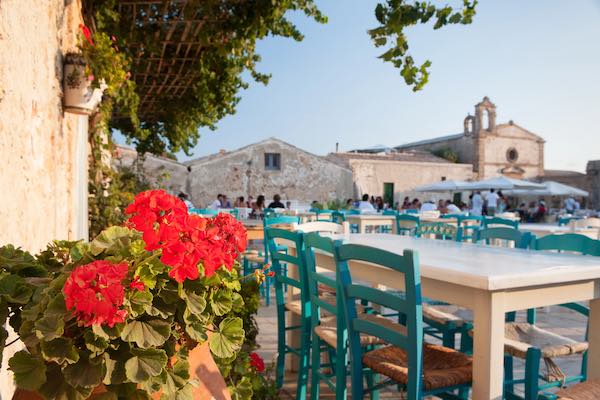
Think about it: what is the point in going to see Michelangelo’s David in Florence as quickly as possible because you think you must?
What is the sense of going to see art, intended to elicit emotion in the viewer, if you don’t give yourself the time to feel it? Or if even with time you know it simply will not speak to you?
Only plan must dos that YOU want to see: don’t let social media, social pressure or anything else dictate what you go see; it’s your vacation, you do you!
Avoiding a standard ‘must see’ approach will allow for a much better experience and also will keep you away from the most crowded places. Win-win!
Avoid Easter and the busiest months
Italy is busy almost all year round but it gets at its busiest at specific times, which many not be those you expect.
The worst time to come to visit cities is Easter.
The Easter break brings to Rome, Florence and Venice throngs of people, partially for religious reasons (Rome), partially for the more practical element of school closures in many countries.
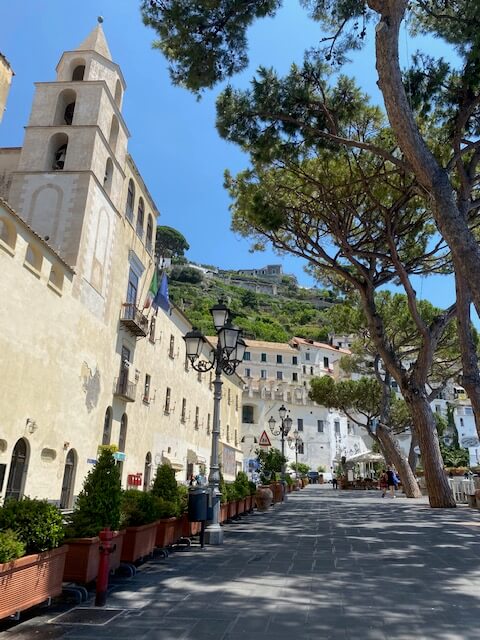
Other exceptionally busy months in Rome and Florence are May, June, September, October (October is insanely busy in Rome) and the week between Christmas and the 6th go January, aka the Christmas holiday.
In Venice, the time of carnival is insanely busy.
For anywhere coastal, such as Cinque Terre or Amalfi Coast, the busiest times are July and August, with high numbers still for most of June and September.
For a chance of lower crowds, the best time to come to cities are the months of November, January, part of February/ part of March and, for the coast, May and late September, which still allow for decent weather usually but see fewer visitors.
Know where and when Jubilee events are (this is specific for 2025)
The Jubilee is an event of great meaning for Catholics and a year during which many large religious events take place.
These large events attract individual visitors but most of all they attract the big groups that have come from all over the world specifically for them.
These groups won’t be competing with your for space in golf cart tours of cooking classes and for the most part will not even compete with you for space in hotels.
However, they WILL BE at all major events so if you are hoping to see the Vatican and the main religious sites like Assisi without encountering them, you need to know when the events area and plan around them.
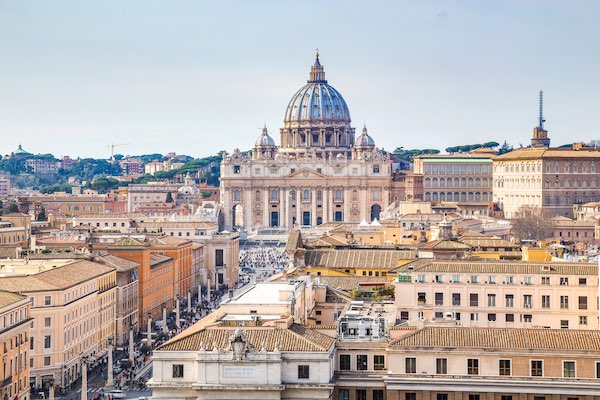
Stay out of town centers
Traditionally, my advice about the best areas to stay in cities such as Rome, Florence and Venice is to stay in the center, as this allows you to walk to most top attractions
This advice still stands; however, there is no chance of escaping the crowds here as the areas are so sought after, convenient and beautiful, it is the first choice of pretty much all visitors who an afford a room here.
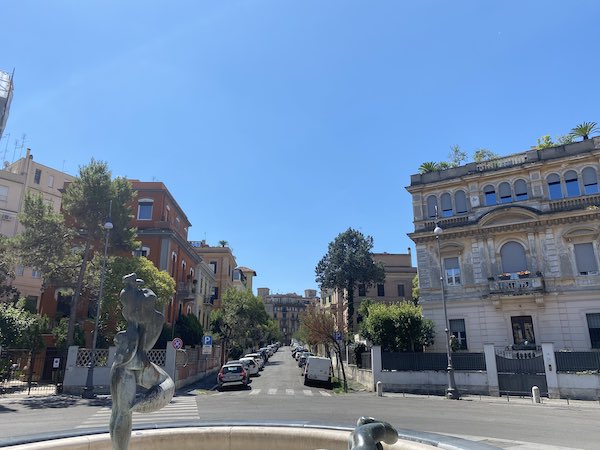
Instead, I recommend you look at areas that are close to the center yet immediately outside of the most popular ones.
For instance in Rome, you can consider Prati or Monti; in Florence Santa Croce or Oltrarno; in Venice Castello.
These offer better priced accommodation, often more spacious and with higher specs than an equally priced one in the center. Also, usually you have better food options, as local restaurants cater to locals more than tourists and quiet, relaxing cafes and parks to recharge after sightseeing.
As well as this, these areas offer you the chance to experience the actual city in all its local splendor, as opposed to only the historic center
Staying away from the center comes with the potential need to use public transport but if you have more time this will not eat much into your time and the extra hassle will be easily compensated by all the upsides of an out of the center location.
Consider staying the night
One of the worst culprits of overtourism is day tripping (and within day tripping: cruise stops).
A small town is a logical destination for a day trip as it only requires a handful of hours to visit but if you have a large number of people descending on a tiny center all at the same time – think the passengers of a cruise ship, equivalent to a medium size town, reversing themselves into a small village – there is no way to escape the sardines-in-a-can feel.
The solution to this is often staying the night!
Day trippers need the time to arrive and make their way back so if you can be in the village before their arrival and after they have gone, the problem solves itself!
Go exploring very early in the morning
I know that getting up early on vacation is the last thing many of us want to do but most places are at their best and blissfully quiet early in the morning.
If you get out and explore at dawn (wait for daylight to break), when cafes open and only early morning workers and the motivated few are out, you are rewarded with empty piazzas, stunning photo ops, a beautiful lights and you’ll feel that magic of Italy overtourism has now made to hard to feel.
Consider staying in the next town over
Another way to stay away from the crowds is to stay away from the most famous place and set up home in the next town over.
In many cases, the experience won’t be significantly different in terms of overall experience and you will still be close enough for the early morning / evening visit approach mentioned above!
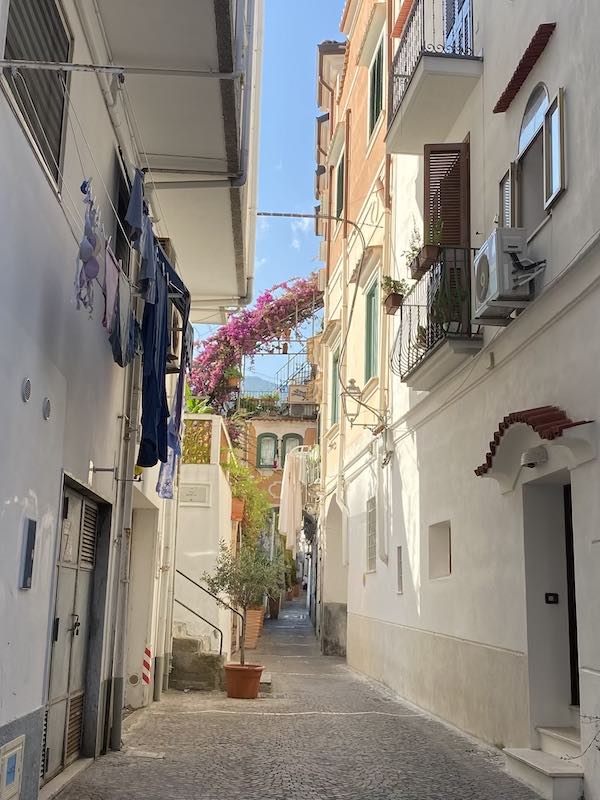
Invest in before-opening time / evening tours (high budget)
Some attractions such as the Vatican Museums offer the option of out of hours tours, that let you get into the museums before everyone else, effectively beating to it day trippers, night owls and anyone who doesn’t like to or cannot get up before dawn.
These tours are expensive as they only allow a limited number of people in but are worth their weight in gold if you can afford them.
The best ones I know are:
Express early morning Sistine Chapel and Vatican Museum Express Tour This is an EXCELLENT tour of the Vatican Museum focusing on the museum top attractions and the Sistine Chapel and that allows you to enter before the museums open to the general public. The early entrance means you can escape the worst of the crowds and since the tours is relatively short, you’ll be able to get away from the area before the masses arrive.
Vatican Museum late afternoon Evening Tour This is another great tour that makes the most of the other quieter time at the Vatican: late afternoons. The tour starts as the crowds start to dwindle and day trippers leave so while you’re not entirely alone in the Vatican, you only find a fraction of the visitors you get in the central hours of the morning, which is when most people are there.
Alone in the Sistine Chapel tour – This tour comes at a very high price point but is your chance to truly see the Sistine Chapel with almost no one else there.
The tour is only offered on selected dates and is available via LivTours thanks to a long standing relationship they have with the Vatican, which meant they get privileged access. If budget allows, this is a great tour to get.
Other attractions don’t have a before opening option, but they do have first viewing or evening tours available which are the next best thing.
Invest in boat tours
Another high budget option but a good one is investing in boat tours for coastal areas.
Areas such as Cinque Terre or Amalfi Coast are at their most beautiful seen from the water.
Being on a boat allows you to enjoy these stunning views in a secluded, and wonderfully private, quiet easy.
Ferries can work too! Not quite the same but they are still a great way to sit and watch stunning landscape from the quiet of a boat deck!
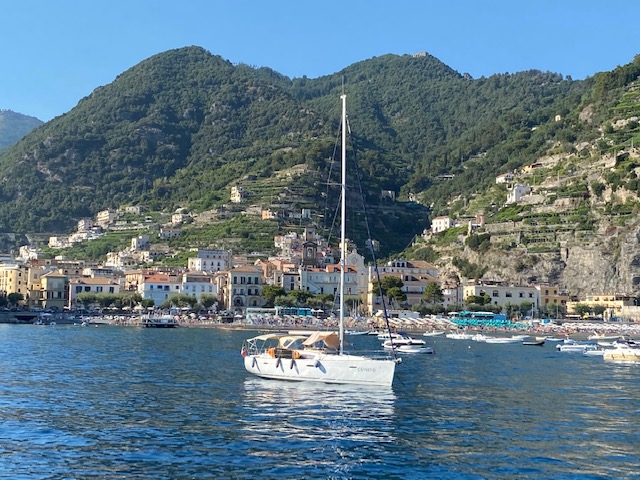
Seek tickets for limited access areas
Some attractions have secluded areas that are only accessible by a restricted number of people, a limitation that makes these areas hard to get access to but blissfully empty if you are among the lucky ones to get in.
The best examples of this is the Colosseum. The Colosseum has a fantastic top tier called ‘attic’ which only allows a handful of people in at any given time.
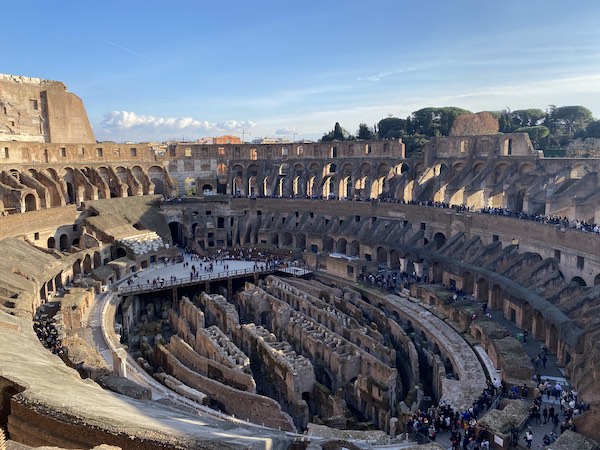
Don’t search for ‘the best’ (Let me explain this!)
When we travel or do anything really, we want to make sure we get the best: the best deal, the best tour, the best restaurant, the best time… but let’s be honest here: a lot of the stuff presented on the web as ‘best’ is not best at all.
Are you telling me that the influencer you’re following has tried all the restaurants and all the hotels and all the tours to tell you what is best?
Of course not!
The web and social media especially is, for the most part, a massive echo chamber: you just see the same advice repeated over and over again but it doesn’t come from different sources, it’s just a repetition of what has been already said.
There is only a handful of locals who can genuinely give an informed opinion on what’s best based on EXTENSIVE and constant research – me, for instance!
I am from Rome, and I made it my job to literally explore the city and Italy trying as many things as possible to select the best ones and recommend them to you. It’s what I do, my passion, mission and full time job!
So, when you are searching for something, don’t just look at lists of ‘best’ things.
Look for local experts like me (or your host on location!) and follow their advice: you’ll stay away from where everyone goes, spend less and you’ll have a better experience.
Also, trust your instinct!
You find a great looking hotel with great reviews? A lovely looking restaurant? Just go in! Unless you have reasons to think a place is bad, then assume it will be good: food in Italy will always be better than Italian food abroad so genuinely: the risk is minimal.
The same applies to many things: in most cases there is no ‘best’ time, ‘best’ town, ‘best’ class: just a long list of great ones. The experience won’t be that different if you see Pienza or San Quirico, Bellagio or Varenna – the difference between these places is minimal vs how different they are from where you’re from, it will be amazing anyway!
Stay in the countryside
Another fantastic way to get rid of crowds is by opting for a country stay.
If you stay in a secluded country home, may it be a hotel or a farm or a villa, you’ll be away from the crowds any time you need to to.
For instance, you can stay in the countryside and get into Florence or Siena or San Gimignano for the day , then retreat in blissful quiet after sightseeing.
Or if you stay close enough, you can spend the whole day in peace and pop into the town in the evening when it’s quiet.
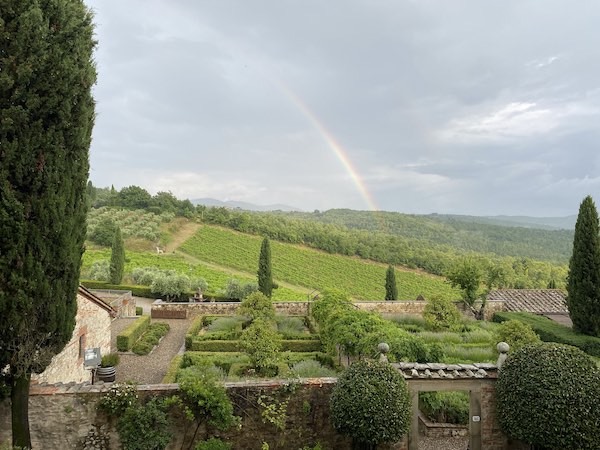
Driving in Italy is not half as scary as the web suggests and comes with the advantage of being able to have your own space away from the maddening crowds, it is definitely worth considering.
I hope these quick tips helps you plan your trip and gave you hope that it is indeed possible to avoid the crowds and still have a wonderful stay!

